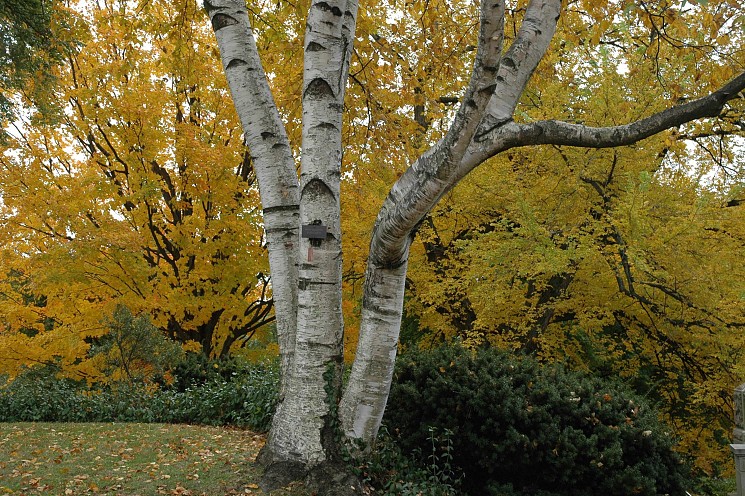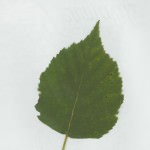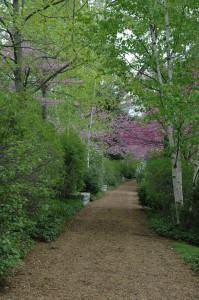Betula papyrifera

Betula papyrifera commonly referred to as paper, white, or canoe birch is a native of the northern New England forest. It has the most widespread geographic distribution of the other American birch species, actually being circumboreal, extending from Greenland and Labrador west across our continent to Washington state, British Columbia and southern Alaska.
The Abenaki, native people of the pre-colonial area of current-day Maine, used a roll made of birch bark to wrap the bodies of their dead prior to burial. The more quintessential image of these native peoples’ use of this bark was for building birch bark canoes, a craft they shared with early European settlers. The Abenaki also used this waterproof bark for baskets, boxes, bowls, cups, kettles, cooking utensils, cradles, mats and a host of other items. Decorative arts were created by a technique of biting birch bark between one’s eye teeth that had been folded and refolded, similar to our creating paper snowflakes. Snowshoes were made from the wood and sap was tapped as a second favorite to maple sap.
 The birch’s inconspicuous flowers are separate “male” and “female” catkins on the same tree. Seeds from pollinated female catkins provide food for many of Mount Auburn’s birds and are the preferred food of the purple finch, American goldfinch, red-breasted nuthatch and common redpole. The larvae (caterpillars) of the viceroy, red-spotted purple and mourning cloak butterflies eat birch leaves for sustenance before producing their chrysalis.
The birch’s inconspicuous flowers are separate “male” and “female” catkins on the same tree. Seeds from pollinated female catkins provide food for many of Mount Auburn’s birds and are the preferred food of the purple finch, American goldfinch, red-breasted nuthatch and common redpole. The larvae (caterpillars) of the viceroy, red-spotted purple and mourning cloak butterflies eat birch leaves for sustenance before producing their chrysalis.

Several paper birch trees line the path of Halcyon Garden. Their white bark stands out in this spring time view.
While experts have differing opinions as to why the bark is white, who can be unmoved by the beauty of this smooth yet naturally peeling bark? James Russell Lowell (Lot #323, Fountain Avenue) in his “An Indian Summer Reverie” referred to this birch as “the most shy and ladylike of trees”. This birch was one Eleanor Roosevelt’s favorite trees.
As September’s passing days slowly inch us toward fall, the paper birch will begin to glow with leaves turning the colors of gold. On your next visit to Mount Auburn look for paper birch located on Larch Ave., Pine Ave., Beech Ave., Halcyon Ave., Garden Ave., Glen Ave., Meadow Rd., Primrose Path and Aralia Path among other locations.
*This Horticulture Highlight was originally published in the September 2009 issue of the Friends of Mount Auburn electronic newsletter.
Leave a Reply